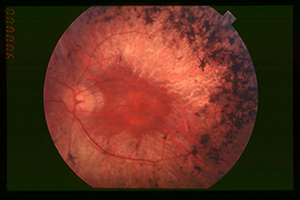 |
|
“Low prices, convenience, and free toys target the middle class—especially budget-conscious, hurried parents—very well," Leigh said. |
As earnings increase from low to middle class, so does the frequency of fast-food dining, weakening the argument that fast food can be blamed for higher rates of obesity among the poor.
“There is a correlation between obesity and lower income, but it cannot be solely attributed to restaurant choice,” says J. Paul Leigh, professor of public health sciences at University of California, Davis. “Fast-food dining is most popular among the middle class, who are less likely to be obese.”
For a new study, published online in Population Health Management, Leigh and co-author DaeHwan Kim used data from the 1994 to 1996 Continuing Survey of Food Intakes by Individuals and the accompanying Diet and Health Knowledge Survey.
The nationally representative sample of nearly 5,000 people in the U.S. included data about food consumption patterns, including restaurant visits over two nonconsecutive days, which was compared with demographic variables such as household income, race, gender, age and education.
Eating at full-service restaurants, which involve a range of food choices and sit-down service, followed an expected pattern: as income rose, visits increased. In contrast, eating at fast-food restaurants, characterized by minimal table service and food preparation time, followed a different pattern. Fast-food restaurant visits rose along with annual household income up to $60,000. As income increased beyond that level, fast-food visits decreased.
The fast-food industry attracts the middle class by locating restaurants off freeways in middle-income areas and by offering products that appeal to a large proportion of Americans, Leigh notes.
“Low prices, convenience, and free toys target the middle class—especially budget-conscious, hurried parents—very well," Leigh said.
Additional correlations revealed in the study included:
- Men were more likely than women to go to both fast-food and full-service restaurants.
- People with more education were more likely to go to full-service restaurants.
- People who worked more hours were more likely to go to both fast-food and full-service restaurants.
- Smokers were more likely to go to fast-food rather than full-service restaurants.
The study was limited because data came from the mid-1990s, the most recent information available. Although incomes have changed considerably since then, Leigh believes that the eating-out patterns would still hold if more up-to-date data were available.
“It has traditionally been difficult to define patterns of restaurant consumption for Americans according to their incomes,” he said. “By using a very large, nationally representative database that includes detailed information on income, we have solved that puzzle.”
Based on his findings, Leigh suggests that policymakers and researchers look beyond restaurant type for reasons for and solutions to the obesity epidemic. He plans to study the effects of food pricing on food choices.
“Pricing is critical to low-income families, and over the past 30 years the costs of less healthy options have dropped compared to healthier fare,” said Leigh. “One potential way to encourage healthier eating could be to charge taxes that increase based on the number of calories in food. Proceeds from the taxes could then be used to subsidize and reduce the costs of healthy foods.”
Co-author DaeHwan Kim, who earned his doctorate in economics at UC Davis, is currently with the Korea Insurance Research Institutes in Seoul. The research was funded in part by the National Institute of Occupational Safety and Health.

|











